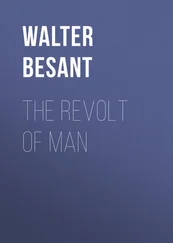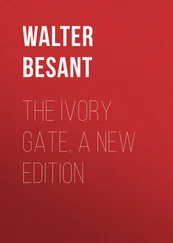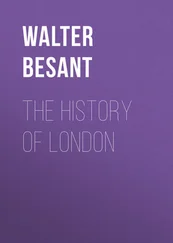Walter Besant - Medieval London (Vol. 1&2)
Здесь есть возможность читать онлайн «Walter Besant - Medieval London (Vol. 1&2)» — ознакомительный отрывок электронной книги совершенно бесплатно, а после прочтения отрывка купить полную версию. В некоторых случаях можно слушать аудио, скачать через торрент в формате fb2 и присутствует краткое содержание. Жанр: unrecognised, на английском языке. Описание произведения, (предисловие) а так же отзывы посетителей доступны на портале библиотеки ЛибКат.
- Название:Medieval London (Vol. 1&2)
- Автор:
- Жанр:
- Год:неизвестен
- ISBN:нет данных
- Рейтинг книги:3 / 5. Голосов: 1
-
Избранное:Добавить в избранное
- Отзывы:
-
Ваша оценка:
- 60
- 1
- 2
- 3
- 4
- 5
Medieval London (Vol. 1&2): краткое содержание, описание и аннотация
Предлагаем к чтению аннотацию, описание, краткое содержание или предисловие (зависит от того, что написал сам автор книги «Medieval London (Vol. 1&2)»). Если вы не нашли необходимую информацию о книге — напишите в комментариях, мы постараемся отыскать её.
Medieval London (Vol. 1&2) — читать онлайн ознакомительный отрывок
Ниже представлен текст книги, разбитый по страницам. Система сохранения места последней прочитанной страницы, позволяет с удобством читать онлайн бесплатно книгу «Medieval London (Vol. 1&2)», без необходимости каждый раз заново искать на чём Вы остановились. Поставьте закладку, и сможете в любой момент перейти на страницу, на которой закончили чтение.
Интервал:
Закладка:
“Its professed object was to examine into unlawful colligations, confederations, and conventions by oaths, which were known (or supposed) to have been formed in the City. The annoyance caused by this Iter, the general stoppage of trade and commerce, the hindrance of municipal business, is realised when we consider that for six months not only the Mayor, Sheriffs, and Aldermen for the time being, but every one who had filled any office in the City since the holding of the last Iter—a period of nearly half a century—as well as twelve representatives from each ward, were called upon to be in constant attendance. All charters were to be produced, and persons who had grievances of any kind were invited to appear. Great commotion prevailed among the citizens upon receiving the King’s writ, and they at once addressed themselves to examining the procedure followed at former Iters.” ...
“The opening of the Iter did not augur well for the City. Fault was found at the outset, by Geoffrey le Scrop, the King’s Sergeant-pleader, because the Sheriffs had not attended so promptly as they should have done. The excuse, that they had only acted according to custom in waiting for the grant of a safe-conduct, was held unsatisfactory, and nothing would please him but that the City should be at once taken into the King’s hand.
Again, when the citizens claimed to record their liberties and customs by word of mouth without being compelled to reduce them into writing, as the justices had ordered, the only reply they got was that they did so at their own peril. Three days were consumed in preliminary discussion of points of etiquette and questions of minor importance.
On the fourth day the Mayor and citizens put in their claim of liberties, which they supported in various charters. The justiciars desired answers on three points, which were duly made, and matters seemed to be getting forward when there arrived orders from the King that the justiciars should inquire as to the ancient right of the Aldermen to record their liberties orally in the King’s Courts. Having heard what the citizens had to say on this point, the justiciars were instructed to withhold their judgment; and this and other questions touching the liberties of the City were to be postponed for future determination.
On the ninth day of the Iter, a long schedule, containing over a hundred articles upon which the Crown desired information, was delivered to each ward of the City. Days and weeks were consumed in considering various presentments, besides private suits and pleas of the Crown. Suits were determined in the Great Hall of the Tower facing the Thames, whilst pleas of the Crown were heard in the Lesser Hall, beneath the eastern tower. The justiciars occasionally protracted their sittings till dusk, much to the disgust of the citizens, whose business was necessarily at a stand-still, and as yet no indictments had been made. These were to come.”
First on a pretext of dilatory attendance the Sheriffs were reproved and the City taken into the King’s hands; then, when the citizens put in their claims and pleaded their rights, everything was disputed, discussed, and deferred. The Mayor was deposed, and one Richard de Kendole took his place as the King’s Commissioner; indictments were issued against certain leading citizens on one pretext or another; and after five weary months the Iter was brought to an abrupt conclusion, having effected nothing. The reason of this was the rebellion of the Earl of Hereford, which made it dangerous to exasperate the citizens too much. The King’s Commissioner retired and a new Mayor was elected.
The Earl of Hereford wrote a letter to the City asking for an interview. The Mayor, Hamo de Chigwell, a diplomatist of a high order, managed so as to keep on terms both with the King and the Lords. He promised that he would not aid the Spensers nor would he oppose the Lords: the City, in a word, proclaimed neutrality. The Mayor preserved order by a patrol of a thousand men. The events which followed belong to the history of England; London played her part: she sent a contingent with the King to punish Sir Bartholomew de Badlesmere for an insult offered to the Queen; she gave the king 500 archers to fight at Boroughbridge, when the Earl of Lancaster was taken prisoner. After taking part in the defeat of Lancaster the people of London set him up as a Saint: they declared that miracles were wrought at his tomb. Edward tried to force a “Charter of Service” binding the Londoners to go out with him to war, but the City stood firm: Edward’s time was nearly completed. The Queen came over with the avowed intention of banishing the Spensers. The King fled from London, and London rose in open revolt. Edward, before leaving, placed the town in the hands of Sir John de Weston, gave the custody of the City to Walter Stapleton, Bishop of Exeter, and then set out for the western part of the kingdom, for the defence of his favourites, and, as it turned out, to meet his death. The determination with which the Prince constantly stood by his favourites argues obstinacy at least as a quality which might have been turned to better purpose.
Hamo de Chigwell, who was a fishmonger, seems to have led one party and Nicholas Farringdon, a goldsmith, another; but the King appears to have set up and deposed both in turn and with impartiality. In 1326, when the Queen was in Flanders and her lands were seized, Hamo de Chigwell was Mayor. The streets of London were every day the scene of rioting and fighting; the trades fought with each other; the partisans of the Queen fought with the partisans of the King. When the Queen came over bringing her son with her she sent a letter to London with a proclamation denouncing the Spensers. This proclamation amid the cheers of the people was affixed to the Cross in Chepe. Hamo de Chigwell forsook his post and fled to the Black Friars for safety. Hither came the commons and forced him to proclaim the enemies of the King and Queen and their son. And they showed that they meant what they said by seizing one William Marshall, an adherent of the Spensers, and murdering him. It is a curious story of wild justice. The City was for some time entirely in the hands of the common people, who robbed and murdered all suspected of being favourable to the King and the Spensers. The events are thus graphically related by the French Chronicle:—
“At this time, at Saint Michael, Lady Isabelle, the Queen, and Sir Edward, her son, sent their letters to the commons of London, to the effect that they should assist in destroying the enemies of the land: but received no answer in return, as to their wishes thereon, through fear of the King. Wherefore a letter was sent to London by the Queen and her son, and was fixed at daybreak upon the Cross in Chepe, and a copy of the letter on the windows elsewhere, upon Thursday, that is to say, the Feast of Saint Dionis (October 9), to the effect that the commons should be aiding with all their power in destroying the enemies of the land, and Hugh le Despenser in especial, for the common profit of all the realm: and that the commons should send them information as to their wishes thereon. Wherefore the commonalty proceeded to wait upon the Mayor and other great men of the City at the Friars Preachers in London, upon the Wednesday before the Feast of Saint Luke (October 18), which then fell on a Saturday: so much so, that the Mayor, crying mercy with clasped hands, went to the Guildhall and granted the commons their demand, and cry was accordingly made in Chepe, that the enemies to the King, and the Queen, and their son, should all quit the City upon such peril as might ensue. It happened also on the same day, at the hour of noon, that some persons had recourse to arms, and seized one John le Marchal, a burgess of the City, in his own house near Walbrok, who was held as an enemy to the City and a spy of Sir Hugh le Despenser; and he was brought into Chepe and there despoiled and beheaded. Just after this, upon the same day and at the same hour, there came one Sir Walter de Stapelton, the then Bishop of Exestre and Treasurer to the King the year before, riding towards his hostel in Eldedeaneslane, to dine there; and just then he was proclaimed a traitor; upon hearing of which, he took to flight and rode towards Saint Paul’s Church, where he was met, and instantly dragged from his horse and carried into Chepe; and there he was despoiled, and his head cut off. Also, one of his esquires, who was a vigorous man, William Walle by name, took to flight, but was seized at London Bridge, brought back into Chepe and beheaded; while John de Padington, another, who was warden of the manor of the said Bishop, without Temple Bar, and was held in bad repute, was beheaded the same day in Chepe. Upon the same day, towards Vespers, came the choir of Saint Paul’s and took the headless body of the said Bishop, and carried it to Saint Paul’s Church: where they were given to understand that he had died under sentence: upon which, the body was carried to the church of Saint Clement without Temple Bar. But the people of that church put it out of the building: whereupon certain women and persons in the most abject poverty took the body, which would have been quite naked, had not one woman given a piece of old cloth to cover the middle, and buried it in a place apart without making a grave, and his esquire near him all naked, and without any office of priest or clerk: and this spot is called ‘the Lawless Church.’ The same night there was a burgess robbed, John de Charltone by name. Also, on the Thursday following, the Manors of Fynesbury and of Yvilane, which belonged to Master Robert Baldok, the King’s Chancellor, were despoiled of the wines and of all things that were therein, and many other robberies were committed in the City. Also, upon the same day, the commons of London were armed and assembled at the Lede Hall on Cornhille, and the Constable of the Tower there agreed with the commons that he would deliver unto them Sir John de Eltham, the King’s son; as also, the children of Sir Roger Mortimer, Sir Moriz de Berklee, Sir Bartholomew de Burghasche, and the other persons who had been imprisoned in the Tower, by reason of the dissensions for which Sir Thomas de Lancaster and other great men had been put to death: those who were released being sworn unto the commons that they would live and die with them in that cause, and that they would maintain the well being of the City and the peace thereof. Also, there were sworn and received into the protection of the City, the Dean of Saint Paul’s, the Official of Canterbury, the Dean of the Arches, the Abbots of Westminster and of Stratford, and all the religious, and all the justices and clerks, to do such watch and ward as unto them belonged to do. At the same time, upon the Vigil of Saint Luke (October 18) the tablet which Saint Thomas de Lancastre had painted and hung up in the church of Saint Paul was replaced upon the pillar: which tablet had been removed from the pillar by the rigorous command of the King’s writ. At the same time, the Friars Preachers took to flight, because they feared that they should be maltreated and annihilated: seeing that the commonalty entertained great enmity against them by reason of their haughty carriage, they not behaving themselves as friars ought to behave. At this time, it was everywhere the common talk that if Stephen de Segrave, Bishop of London, had been found, he would have been put to the sword with the others who were beheaded: as well as some Justiciars and others, who betook themselves elsewhere in concealment so that they could not be found.”
Читать дальшеИнтервал:
Закладка:
Похожие книги на «Medieval London (Vol. 1&2)»
Представляем Вашему вниманию похожие книги на «Medieval London (Vol. 1&2)» списком для выбора. Мы отобрали схожую по названию и смыслу литературу в надежде предоставить читателям больше вариантов отыскать новые, интересные, ещё непрочитанные произведения.
Обсуждение, отзывы о книге «Medieval London (Vol. 1&2)» и просто собственные мнения читателей. Оставьте ваши комментарии, напишите, что Вы думаете о произведении, его смысле или главных героях. Укажите что конкретно понравилось, а что нет, и почему Вы так считаете.












